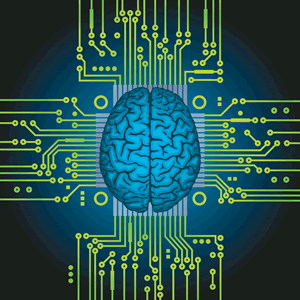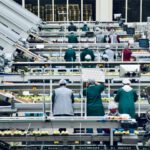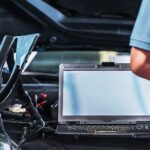Are AI and IoT a Threat to Mankind?
There’s lots of talk about the benefits of the Internet of Things, particularly in the industrial arena, but is there a down side? Arthur Visser asks the question: Are AI and IoT a threat to mankind?
 If you have been following the news recently, you probably heard that Professor Stephen Hawking, one of the world’s most renowned theoretical physicists, told the BBC in December that the development of full artificial intelligence could spell the end of the human race.
If you have been following the news recently, you probably heard that Professor Stephen Hawking, one of the world’s most renowned theoretical physicists, told the BBC in December that the development of full artificial intelligence could spell the end of the human race.
Hawking explained that the relatively primitive forms of artificial intelligence (AI) currently available have proved useful, but he fears the consequences of creating more sophisticated systems in the future: “It would take off on its own and re-design itself at an ever increasing rate…Humans, who are limited by slow biological evolution, couldn’t compete, and would be superseded.”
Hawking is not alone. Elon Musk, the technology entrepreneur and founder of Space X (space rockets) and Tesla (electric vehicles) has warned that in the longer term, AI is “our biggest existential threat.”
In the short term, there are concerns that when intelligent machines or robots are capable of undertaking human tasks, millions of jobs will disappear, threatening the basic structure of our society. (This trend, “the rise of the robots,” has been covered by Bishop & Associates in previous articles.)
Other scientists and business leaders are less pessimistic and see more advantages than disadvantages with the development of artificial intelligence.*
But, assuming for the moment that Hawking has a point, let’s try to take this idea a step further. A lot has been published about the Internet of Things in recent years. It is difficult to put a fence around the Internet of Things (IoT), as the term is widely used by a range of industries, companies, professionals, and technology gurus. However, the common denominator is that the IoT refers to the trend that products and equipment we use in our daily lives or for professional or industrial purposes are being networked and linked up to a network, usually the Internet, using some form of data capture and communication.
Communication could be unidirectional, providing information to the network, or it could be bi-directional, allowing humans or other “controllers” to manipulate or send instructions to the equipment to trigger actions. For example, nowadays I can “talk“ to my car using my smartphone, and in winter ask it to start heating up 10 minutes before I leave the house. We can monitor our homes with cameras when on vacation, check the alarm systems, or manipulate the lighting remotely.
Likewise, the trend has taken hold in factories where industrial robots take over more human tasks and talk to factory controllers to initiate maintenance jobs or signal the need for stock replenishment orders (which are issued automatically, too). These applications are quite innocent.
But we are also able to manipulate (military) drones remotely. These are not likely to use the IoT to communicate, as there are other more secure communication networks in place for these applications (i.e. military satellite networks), but it’s a relatively small step to build unmanned aircraft systems using technology that is widely available for those with less honorable intentions. (It is common knowledge that drones are already in use to traffic drugs from Mexico to the US.) As with all other wireless technologies, even if we build systems for legitimate use, the systems would remain vulnerable to unintentional or intentional interference.
What Could Happen if We Combine AI and IoT?
Currently, we assume that we, humans, remain in control of and have the final say on the Internet of Things. But what if smart, intelligent machines take control, intentionally or unintentionally, and start to “manage” the IoT for us? This idea is not so far-fetched. How secure will it be? Hollywood has already explored similar scenarios in films such as “2001: A Space Odyssey” and “The Matrix.” Naturally, AI programs will be designed to benefit us and make our lives more comfortable. But what if, as Hawking fears, they take off on their own and re-design themselves at an ever-increasing rate? And what if humans, too limited to compete, are superseded or even “neutralized” because they’re inefficient? Perhaps this is material for another Hollywood blockbuster?
Maybe this scenario is too gloomy, and mankind will find a way to stay in control at all times. We can always pull the plug, right?
Pulling the Plug
Probably the most widely used (and effective) form of troubleshooting today is this: “Have you tried to switch it off and on?”
It is not unlikely that plugging and unplugging will remain an effective way to troubleshoot in the future. This could be good news for connector manufacturers.
AI systems need energy to operate and function. Pulling the plug effectively deprives an AI system of its primary energy source. As long as the system is not clever enough to “autonomously” install back-up power systems, we should be fine.
So if we can control the plugs (the connectors), we control the AI devices. After years of designing self-guiding connectors, robust locking systems, and heavy-duty enclosures, perhaps the time has come to start thinking of designing intelligent connectors that can be remotely disconnected or unmated by “human override.” After all, controlling the connections provides us with a basic way to control the AI equipment.
Opportunities in the Industrial Internet of Things
Let’s take a step back again from life-threatening combinations of AI and IoT and return to the reality of today with both feet firmly on the ground. At the recent World Economic Forum in Davos, Switzerland, Accenture, a consultancy company, addressed the audience with two presentations about the industrial Internet of Things. Accenture’s definition of the industrial Internet of Things is a network of physical objects, systems, platforms, and applications that contain embedded technology to communicate and share intelligence with each other, the external environment, and with people: “The adoption of the IoT is being enabled by the improved availability and affordability of sensors, processors, and other technologies that have helped facilitate capture of and access to real-time information.”
Noteworthy is that Accenture talks about the use of the IoT for industrial applications. Secondly, the adoption of the industrial IoT appears to depend on “the availability and affordability of sensors, processors, and other technologies.” For the connector community, this would translate into wired and wireless connectivity products combined with sensor technology. In the past two years, two leading connector manufacturers, TE Connectivity and Amphenol, have made a decisive move into the sensor technology business. TE Connectivity acquired American Sensor Technologies and Measurement Specialties in 2014, while Amphenol acquired GE’s Advanced Sensor Division in 2013.
According to Accenture, “the industrial Internet — the combination of Big Data analytics with the Internet of Things — is producing huge opportunities for companies in all industries, but especially in areas such as aviation, oil and gas, transportation, power generation and distribution, manufacturing, healthcare, and mining.”
Will this development translate into a new, bigger market for connectors? And will it trigger the development of new connector types or will it just increase the potential of existing connector types? No doubt it will be a mix of all of these. The Industrial IoT will offer opportunities for connector makers and for suppliers of other technologies, including sensor technology, to capture the data. At the same time, design engineers will come up with new connector designs that will replace existing types and are superior in terms of performance, reliability, and cost. In parallel, the industry will discover or create new materials, such as graphene, that can be used on an industrial scale. But, as we speak, perhaps graphene has been replaced by silicene?
Considering these latest developments in terms of the global economic outlook and market sector trends, Bishop & Associates published a new Connector Industry Forecast (March 2015) in which we provide a five-year forecast through 2020 by region of the world, by market sector, and by product type.
* To read more on this topic, click here.
- The Industrial Market for Connectors in a Changing World - April 20, 2021
- How Key Trends in the Transportation Market Will Impact Electronics Growth - March 17, 2020
- Automation Means a Bright Forecast for Industrial Connectors - February 19, 2019





